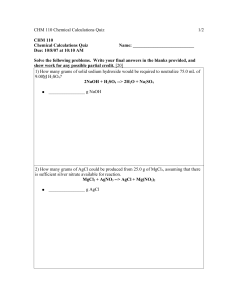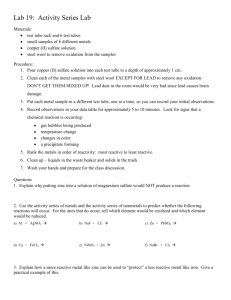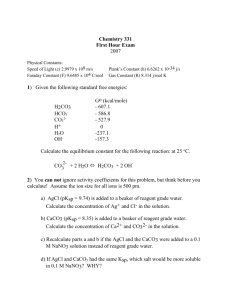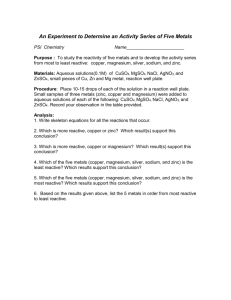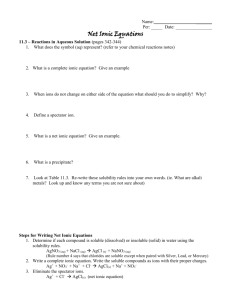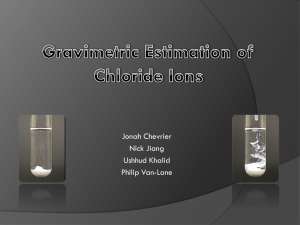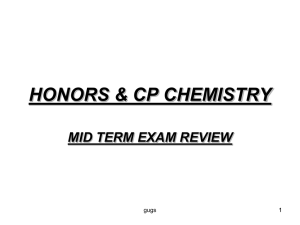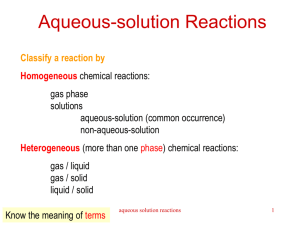Predicting Products
advertisement
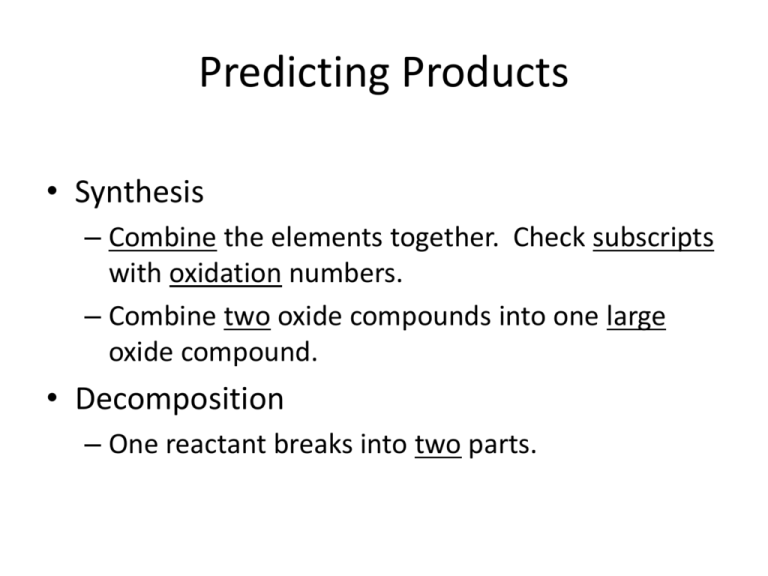
Predicting Products • Synthesis – Combine the elements together. Check subscripts with oxidation numbers. – Combine two oxide compounds into one large oxide compound. • Decomposition – One reactant breaks into two parts. Predicting Products • Combustion – Start with a hydrocarbon and oxygen. – The products will be carbon dioxide and water. • Single Replacement – Metal replace metals. Check subscripts with oxidation numbers. – Nonmetal replace nonmetals. Check subscripts with oxidation numbers. – Need to check activity series Activity Series – Table 4, pg 281 or 832 for more complete table • A series of elements that have similar properties and that are arranged in decreasing order of chemical activity • However, reaction will only occur if the more reactive material is added to a less reactive material. • A more reactive material displaces a less reactive material. • The more reactive the material, the higher on the activity series it will be. Predicting Products • Double replacement – First elements switch. Check subscripts with oxidation numbers. – Neutralization falls under this category. In the reaction, it makes the product liquid water and a soluble salt. – Need to check solubility chart Solubility Chart • Helps predicts if a double replacement reaction will occur. • If an insoluble product is produced, the reaction will take place. • These can come in the form of a precipitate, a gas or sometime a liquid. • This chart helps to predict if a precipitate (insoluble solid) forms • 2 Zn + O2 • F2 + Mg 2 ZnO MgF2 • 2 AgCl 2 Ag + Cl2 • 2 HgO 2 Hg + O2 • • C3H8 + O 52 Synthesis Synthesis Decomposition Decomposition 3 CO2 + 4 H2O Combustion HCl + NaOH NaCl + H2O Neutralization Examples – Predict if the following will occur. If they will, predict the result: • NaI + Cl2 Cl is higher than I yes NaCl + I2 Ag is higher than Au yes • AuCl3 (aq) + Ag(s) AgCl + Au Ag is lower than Ca no • AgNO3 (aq)+ CaCl2 (aq) No reaction AgCl is not soluble yes • AgNO3 (aq) + NaCl (aq) AgCl (s) + NaNO3 (aq) PbCl2 is not soluble yes • Lead (II) nitrate + sodium chloride PbCl2 (s) + NaNO3 (aq) Pb(NO3)2 (aq) + NaCl (aq)

